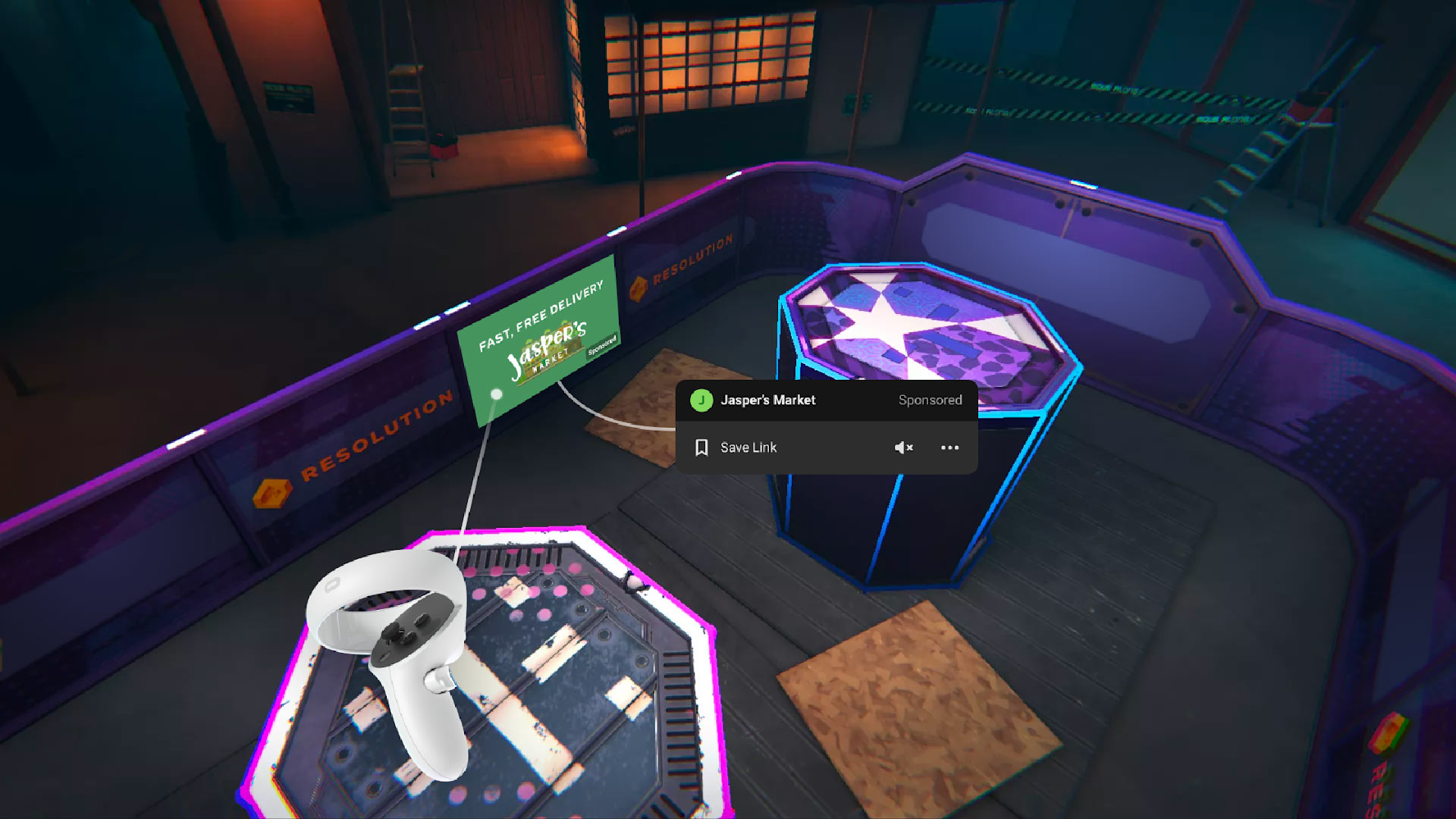Facebook to Begin Testing Ads for Paid Content Within the Oculus App
Facebook has been open about its intention to introduce ads into the Oculus VR platform in some format. In its v29 software update for Oculus Quest last month, Facebook revealed that it would begin testing ads for content within the Oculus App. It wasn’t, however, clear the extent to which the ads would touch the games.
Last week, Facebook revealed that it would begin experimenting with ads in paid games as well. Resolution Games’ popular 1v1 shooter Blaston (2020) along with a number of other developers have already signed onto a beta to test the in-game ads.
The advertisements have been pitched as a way for developers to generate more revenues from their apps and are set to begin showing up in some select platform games as well as experiences in the coming weeks.

From the image released so far, it looks like the in-game ad beta will enable developers to insert dynamic billboards straight into game environments.
At the moment, the ad feature is only a test with a few apps according to a post on the Oculus blog. Once Facebook sees how the test goes and incorporates developer and community feedback, it will reveal additional details on when the ads may be more broadly available across the Oculus platform as well as in the Oculus mobile app. The company will also provide guidance for businesses along with the developers that are interested in advertising on Oculus.
At face value, it looks like Facebook will primarily rely on the user web traffic as well as content interests to drive targeted ads. Facebook has stated that it won’t be using locally stored info such as raw images from the Oculus Quest sensors, images of a user’s hands, height, weight, or gender. Also not up for grabs are the in-app messaging from Facebook Messenger, Parties, or chats, including microphone audio.
Facebook will also be providing a way of hiding specific ads or of completely hiding ads from a particular advertiser. Users will also be able to turn off ad impressions based on the web traffic that’s not from virtual reality. This will not necessarily change the number of ads that will come to you; it will only alter the degree of ad relevancy for the user.
Facebook also stated that it would focus on inobtrusive methods to enable developers to insert ads while it still explores “new ad formats that are unique to VR” in the future. It isn’t particularly apparent what Facebook means by this. However, it is clear that if a headset includes more detailed biometric data such as optical face tracking, eye tracking, and integrated wearables, a company can come closer to building a clearer picture of a user’s attitudes, interests, as well as spending habits. While we aren’t there yet, we may be seeing Facebook taking its first steps in that direction.
https://virtualrealitytimes.com/2021/06/17/facebook-to-begin-testing-ads-for-paid-content-within-the-oculus-app/https://virtualrealitytimes.com/wp-content/uploads/2021/08/Facebook-Ads-Inside-Paid-VR-Games-600x338.jpghttps://virtualrealitytimes.com/wp-content/uploads/2021/08/Facebook-Ads-Inside-Paid-VR-Games-150x90.jpgBusinessFacebook has been open about its intention to introduce ads into the Oculus VR platform in some format. In its v29 software update for Oculus Quest last month, Facebook revealed that it would begin testing ads for content within the Oculus App. It wasn’t, however, clear the extent to...Sam OchanjiSam Ochanji[email protected]EditorVirtual Reality Times - Metaverse & VR
